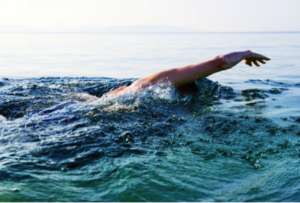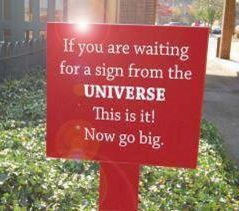 Musings
Musings  No Comments
No Comments Prof. Hawking Goes Weightless — The True Story
Dec 7, 2012 – Public
In this blog, I want to share with you how I overcame the risks involved in taking the world-famous wheelchair-bound physicist Stephen Hawking on a zero-gravity flight.
Doing anything bold and significant in life requires taking risks. And one of the biggest risks I took this past decade was flying the world-famous physicist into zero-gravity.
This blog is the first time I’m speaking about the behind-the-scenes story of those risks and the countermeasures we took. What might have seemed easy from the outside world, was not in any fashion in its execution.
Back in 2007, I had the opportunity to meet Professor Stephen Hawking through the +X PRIZE Foundation. In my first conversation with him I learned that he was passionate about flying into space someday. I told him that while I couldn’t get him into orbit, I could offer him the chance to fly aboard our specially modified Boeing 727 and experience weightlessness. After all, the idea of flying the world’s “greatest expert in gravity” into zero-gravity was too good to be true. He said yes immediately — or for as long as it took him to type out the letters on his machine.
In 2007, I had been running Zero-G for almost 14 years. Co-founded in 1993 with astronaut Byron Lichtenberg and NASA scientist +Ray Cronise, it had been a very, very long startup. It had taken us nearly 11 years to get permission from the FAA to offer the general public the experience of weightlessness (our first flight was in September 2004).
Meeting with my team, we brainstormed making the flight into a fundraiser for ALS (Hawking’s motor neuron disease is related to ALS, or Amyotrophic Lateral Sclerosis). Hawking quickly agreed and we sent out a press release the very next day saying, “Zero G to fly Stephen Hawking into weightlessness to raise funds for ALS.” I had expected nothing but positive reaction. But what happened next shocked me. I received two phone calls. One came from our airline partner saying, “You’re crazy. You’re going to be flying this guy who has been in a wheelchair for 40 years and there’s a good chance he might get injured.” The other came from a friend at the FAA who said, “You know the rules under which you are operating require that anyone flying must be certified ‘able-bodied’ and I can’t imagine anyone here would view Prof Hawking as able-bodied.” On top of that, I had a number of people in the commercial space world approach me saying that this was a bad idea, that a major accident could set back everything we had been working toward for decades.
I was in a quandary. I had started Zero-G specifically to broaden the public for access to weightlessness. Commercializing space was all about giving the experience to a much broader audience, especially amazing people like Prof. Hawking. To be told “no” was all the more reason to figure out how to make it happen. The challenge was getting there without aggravating the FAA lawyers and also making sure the flight was indeed safe for the world’s most famous physicist.
It took me six months, many phone calls with lawyers, my friends at the FAA, our aircraft partner and a number of physicians… but we finally got there.
The first thing we did was ask the question, “Who determines if someone is able-bodied?” The second question we asked is how we could maximize Hawking’s chances of safety.
The answer to the first question, in our opinion, was that the only folks qualified to judge Hawking’s physical health status were his own personal physicians, and perhaps experts from the space-medicine world. So after purchasing liability and malpractice insurance policies for a few (not disclosed here) physicians, we were able to submit three letters to the FAA stating without question, that Hawking was “able-bodied” for the Zero-G flight.
Regarding the second question about safety, we decided to turn the forward half of the G-ForceOne (our special weightless 727 aircraft) into a mobile emergency room able to deal with any slew of medical conditions that might arise. We also decided to conduct a practice flight with a stand-in for Dr. Hawking on whom we would practice a series of zero-g healthcare maneuvers… everything from CPR to electroshock conversion.
With this plan in place and a final blessing from all concerned parties I set out to make this happen. Here’s what happened next:
– We sold about 20 tickets at $15,000 each from donors and raised about $150,000 for ALS. At the same time, we covered our costs for the flight and press conference. (The flight was also sponsored by Spaceport Florida and by Sharper Image.)
– We flew a practice run the day before the actual flight. All of the paying donors got to fly on this flight as well, and float around and enjoy the experience (the next day, they’d be concentrating on observing Hawking during the flight).
– As a stand-in for Hawking during these “medical test runs,” we found a 15-year old high-school boy who had a passion for physics and who was roughly the same height and weight as Hawking. He was put in a wheelchair, told not not to move a muscle, and we practiced what to do if Hawking had a heart attack and tachycardia or suffered a broken bone. These were things at risk: Hawking is very frail.
– Onboard we had four physicians and two nurses monitoring the 15-year-old’s heart rate, blood pressure, Po2 and breathing at the same time that they ran through all of their emergency medical procedures in zero g.
But the day of the flight was extraordinary.
The entire event took place at the +NASA’s Kennedy Space Center on the 15,000-foot-long Shuttle Landing Facility (SLF) — one of the longest runways in the world. That morning in front of hundreds of reporters, we held a press conference announcing our intention to conduct “a least a single 30-second parabola” (normally on a consumer zero-g flight, we do about 15 in total). We chose to do a pre-flight press conference because, frankly, we had no idea what shape Hawking would be in at the end of the day.
What stood out most in my mind that morning, was his answer to the press conference question: “Professor Hawking, why are you doing this flight?”
This was Hawking’s answer: “Life on Earth is at the ever-increasing risk of being wiped out by a disaster… I think the human race doesn’t have a future if it doesn’t go into space. I therefore want to encourage public interest in space.”
We boarded Hawking on his wheelchair using a scissor lift, then carried him off his wheelchair into one of the seats for takeoff. Once we reached cruising altitude of 24,000 feet, we carried him to the front of the airplane and lay him on top of pre-positioned padding and pillows. At Hawking’s feet was my partner and two-time astronaut Byron Lichtenberg. I was at Hawking’s head. As we entered the first parabolic arc and Hawking floated into the air, the entire airplane erupted into cheers. Thirty people in the back of the plane were hooping and hollering. Hawking was free of his wheelchair and the bounds of gravity for the first time in over 40 years. While his entire body is paralyzed, he does have use of a few facial muscles, and the smile that expressed his emotion was extraordinary. He looked like a kid floating in zero-g. After the first parabola, when we returned to normal gravity, I looked over to the lead physicians monitoring his vitals. Apparently everything was rock solid and I was given the thumbs-up to proceed. While my original intention was to do at least one parabola, at most, perhaps three, Hawking wanted to keep going. At the end we finished up doing eight parabolas, with Hawking still raring to go.
Hawking was so filled with energy that after we landed he even did a post-flight press conference. The result was front-page press worldwide.
Again, doing anything significantly big and bold in life requires taking risks. This was a big one for me personally and for the company. One question people ask me is how do you know when to take a big risk? My answer is twofold:
1. If the risk is fully aligned with your purpose and mission, then it’s worth considering. In this case, flying people like Hawking is exactly why we had created Zero G.
2. Second, you need to do everything you can to retire as much of the risk as reasonable, such that you can honestly say that you covered all of the situations you were most concerned about.
I get demoralized by organizations that start off with a mission and pull back when they find it’s risky. I view risk-aversion as crippling America in many ways. Most people (and politicians) forget that 500 years ago, thousands of people risked (and gave) their lives to cross the Atlantic and settle America. And then, again, 200 years ago they did the same to settle the West.
For me, Stephen Hawking’s flight also allowed us to pioneer the ability to take handicapped people into weightlessness and a year later we had the opportunity to take a group of six wheelchair-bound teenagers into zero gravity. These were kids who had never walked a day in their lives. Their experiencing the ability to fly like Superman around the airplane without their wheelchairs was remarkable.
Ultimately when you are doing something new, you have to ask yourself is it worth the risk to you? Is it something that you’re willing to bet everything on? If you’re doing something big and bold that’s sometimes what it takes.
Zero-G today has flown over 12,000 people into zero gravity. The company operates flights in cities across the U.S. The ticket price is $5,000 — reasonable when you think of the 11 years of start-up time! If you’re interested in flying, you can find more on the company’s website: www.GoZeroG.com. It is a truly remarkable experience and worth every penny!


